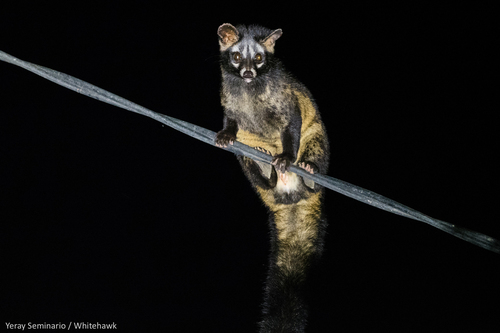
Asian palm civet
Paradoxurus hermaphroditus, or the Asian palm civet, is a nocturnal creature with a cat-like appearance. Thriving in tropical forests, it's renowned for creating kopi luwak coffee, adding a unique twist to its ecological role. Its adaptability and distinctive diet make it a fascinating species.
15-20 years
Lifespan
1.4 - 4.5 kg
Weight
Height: 43 - 71 cm
Size
Brown, Grey, Yellow, Black, White, Tan
Color
Least Concern
Conservation Status
Decreasing
Population Trend
Characteristics
The Asian palm civet, known scientifically as Paradoxurus hermaphroditus, is a nocturnal mammal found in South and Southeast Asia. It is known for its cat-like appearance, with a long body, pointed snout, and bushy tail. It thrives in tropical forests, and is famous for its role in producing kopi luwak coffee, as it eats coffee cherries and excretes the beans, which are then collected and processed.
Distribution Range of the Asian palm civet
The Asian palm civet, scientifically known as Paradoxurus hermaphroditus, is native to South and Southeast Asia. It is found in a wide range of countries including India, Sri Lanka, Bangladesh, Myanmar, Thailand, Malaysia, Indonesia, Vietnam, Laos, Cambodia, the Philippines, and southern China.
Asian palm civet's Habitat
Environmental Conditions
The Asian palm civet inhabits various environments, ranging from tropical rainforests to deciduous forests, and also adapts well to human-modified landscapes such as plantations and urban areas. It thrives in regions with warm and humid climates typical of tropical zones.
Ecological Niche
As an omnivorous and nocturnal mammal, the Asian palm civet plays a role in seed dispersal, particularly for fruiting trees, which is crucial for forest regeneration. It feeds on a diverse diet that includes fruits, berries, small mammals, insects, and sometimes carrion. Its adaptability allows it to live in both dense forests and areas with significant human activity.
Copyright @ Nature Style Limited. All Rights Reserved.
 English
English